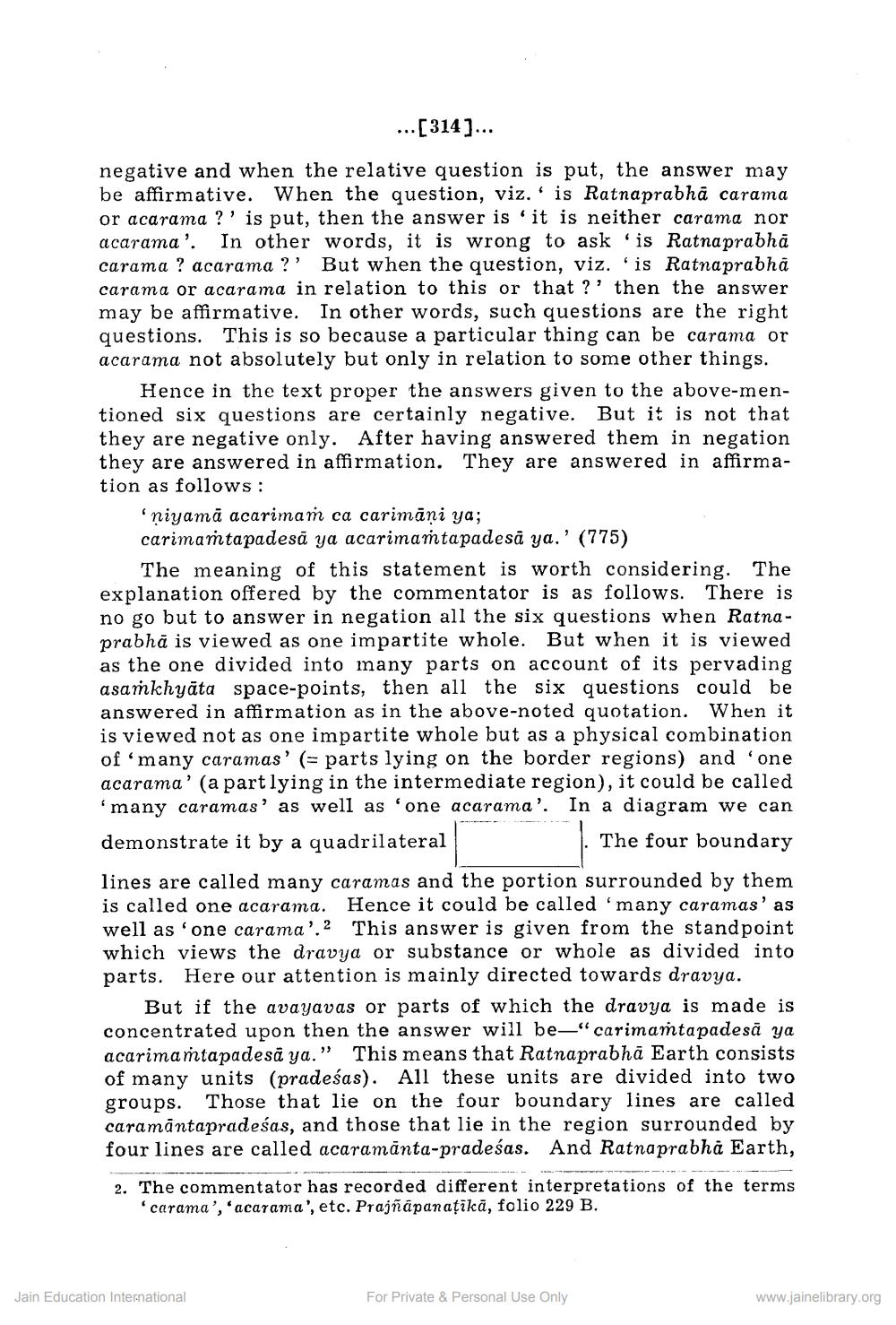________________
...[314]...
negative and when the relative question is put, the answer may be affirmative. When the question, viz. is Ratnaprabha carama or acarama?' is put, then the answer is it is neither carama nor acarama'. In other words, it is wrong to ask is Ratnaprabhā carama? acarama?' But when the question, viz. is Ratnaprabha carama or acarama in relation to this or that?' then the answer may be affirmative. In other words, such questions are the right questions. This is so because a particular thing can be carama or acarama not absolutely but only in relation to some other things.
Hence in the text proper the answers given to the above-mentioned six questions are certainly negative. But it is not that they are negative only. After having answered them in negation they are answered in affirmation. They are answered in affirmation as follows:
'niyama acarimam ca carimāni ya;
carimamtapadesa ya acarimaṁtapadesa ya.' (775)
The meaning of this statement is worth considering. The explanation offered by the commentator is as follows. There is no go but to answer in negation all the six questions when Ratnaprabha is viewed as one impartite whole. But when it is viewed as the one divided into many parts on account of its pervading asaṁkhyāta space-points, then all the six questions could be answered in affirmation as in the above-noted quotation. When it is viewed not as one impartite whole but as a physical combination of many caramas' (= parts lying on the border regions) and 'one acarama' (a part lying in the intermediate region), it could be called 'many caramas' as well as 'one acarama'. In a diagram we can The four boundary
demonstrate it by a quadrilateral
lines are called many caramas and the portion surrounded by them is called one acarama. Hence it could be called 'many caramas' as well as 'one carama'.2 This answer is given from the standpoint which views the dravya or substance or whole as divided into parts. Here our attention is mainly directed towards dravya.
""
But if the avayavas or parts of which the dravya is made is concentrated upon then the answer will be "carimamtapadesa ya acarima mtapadesa ya. This means that Ratnaprabha Earth consists of many units (pradeśas). All these units are divided into two groups. Those that lie on the four boundary lines are called caramantapradeśas, and those that lie in the region surrounded by four lines are called acaramanta-pradeśas. And Ratnaprabha Earth,
2. The commentator has recorded different interpretations of the terms 'carama', 'acarama', etc. Prajñāpanaṭikā, folio 229 B.
Jain Education International
For Private & Personal Use Only
www.jainelibrary.org




